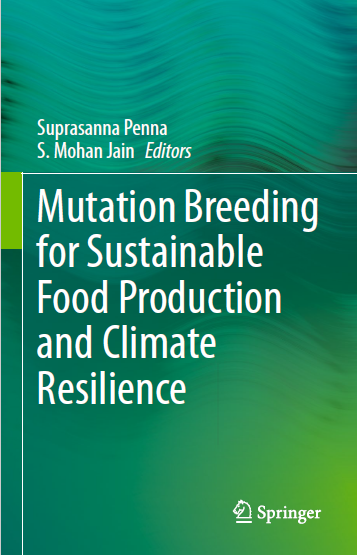Ver ítem
- xmlui.general.dspace_homeCentros e Institutos de InvestigaciónCICVyA. Centro de Investigación en Ciencias Veterinarias y AgronómicasInstituto de GenéticaPartes de librosxmlui.ArtifactBrowser.ItemViewer.trail
- Inicio
- Centros e Institutos de Investigación
- CICVyA. Centro de Investigación en Ciencias Veterinarias y Agronómicas
- Instituto de Genética
- Partes de libros
- Ver ítem
Mutation Breeding for Sustainable Food Production in Latin America and the Caribbean Under Climate Change
Resumen
The region of Latin America and the Caribbean is characterized by the great diversity of crops and environmental conditions where the crops coexist under the effects of different abiotic and biotic stresses, which impact unfavorably the food and nutrition security. This vulnerability increases by the effect of climate change due to increase in minimal and maximal temperatures, changes in rainfall pattern that increased the intensity of drought, and rise
[ver mas...]
The region of Latin America and the Caribbean is characterized by the great diversity of crops and environmental conditions where the crops coexist under the effects of different abiotic and biotic stresses, which impact unfavorably the food and nutrition security. This vulnerability increases by the effect of climate change due to increase in minimal and maximal temperatures, changes in rainfall pattern that increased the intensity of drought, and rise of sea level affecting coastal areas by intrusion of salty water. To alleviate these constraints, several programs of genetic improvement have been developed with the support of the International Atomic Energy Agency (IAEA) directed to obtain new high-yielding varieties under different stressful conditions. From these projects, several mutants have been obtained which are used directly in the production areas because of their good productive potential or as parental in breeding programs. These advances have been achieved in crops such as rice (Oryza sativa L.), tomato (Solanum lycopersicum L.), common bean (Phaseolus vulgaris L.), soybean (Glycine max Merrill), quinoa (C. quinoa Willd), and Hibiscus sabdariffa L. Rice is the crop in which the largest number of mutants have been obtained, and more Latin American countries are involved in rice improvement. In this chapter, we have presented an overview of the progress in mutation breeding in the Latin American and the Caribbean region with successful examples.
[Cerrar]

Autor
González Cepero, María Caridad;
Gómez Pando, Luz;
De Andrade, Alexander;
Arguello Delgado, Juan Felix;
Nakayama Nakashima, Héctor;
Landau, Alejandra Mabel;
Prina, Alberto Raul;
Rodríguez García, Mayra;
Suchini Farfan, Aura;
de la Cruz Torres, Eulogio;
Fuente
Penna, S., Jain, S.M. (eds). Mutation Breeding for Sustainable Food Production and Climate Resilience. Springer. 2023. p. 521-537.
Fecha
2023
Editorial
Springer Nature
ISBN
978-981-16-9720-3
Formato
pdf
Tipo de documento
parte de libro
Palabras Claves
Derechos de acceso
Restringido
 Excepto donde se diga explicitamente, este item se publica bajo la siguiente descripción: Creative Commons Attribution-NonCommercial-ShareAlike 2.5 Unported (CC BY-NC-SA 2.5)
Excepto donde se diga explicitamente, este item se publica bajo la siguiente descripción: Creative Commons Attribution-NonCommercial-ShareAlike 2.5 Unported (CC BY-NC-SA 2.5)


